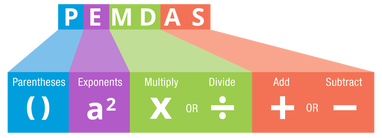Arithmetic Operators
Performing Mathematical Operations
Arithmetic operators are symbols used to perform mathematical operations on numeric data types such as integers and floats. Python provides the following arithmetic operators:
- Addition (+)
- Subtraction (-)
- Multiplication (*)
- Division (/)
- Floor Division (//): Divides two numbers and rounds down to the nearest integer
- Exponentiation (**): Raises the first number to the power of the second number
For example, consider the following Python code
x = 5
y = 2
print(x + y) # Output: 7
print(x - y) # Output: 3
print(x * y) # Output: 10
print(x / y) # Output: 2.5
print(x // y) # Output: 2 (floor division always rounds down)
print(x ** y) # Output: 25 (5 squared)
In the above example, the values of x and y are used as operands with the arithmetic operators to perform various mathematical operations. The results of each operation are printed to the console.
The Modulus (%) Operator
The modulus operator (or “mod” for short) is represented by the percent sign (%) and is used to find the remainder after dividing the first operand by the second operand.
For example, if we have two integers a and b, then the mod operator % returns the remainder when a is divided by b. The result of the mod operator will always be less than the second operand b.
Here’s an example:
a = 10
b = 3
remainder = a % b
print(remainder) # Output: 1 (10 divided by 3 leaves a remainder of 1)
The mod operator is useful in many scenarios, such as determining if a number is even or odd. For example, if a number is divisible by 2 (i.e., the remainder is 0), then it is even, otherwise, it is odd.
In code, this may look like:
x = 20
if x % 2 == 0:
print("The number is even")
else:
print("The number is odd")
The code above would print out “The number is even” since 20 divided by 2 leaves no remainder. We have not yet looked into if-else statements (conditionals) yet, but this is an example of how we can choose a specific output based on a condition using the mod operator.
Order of Operations
Don’t forget PEMDAS! This still applies in Python.

